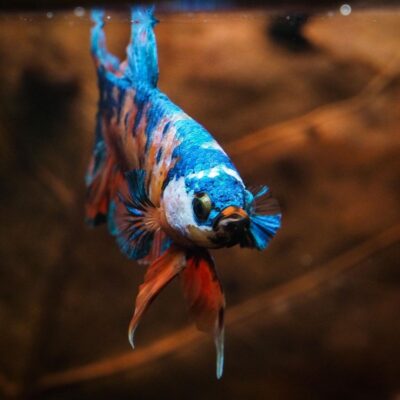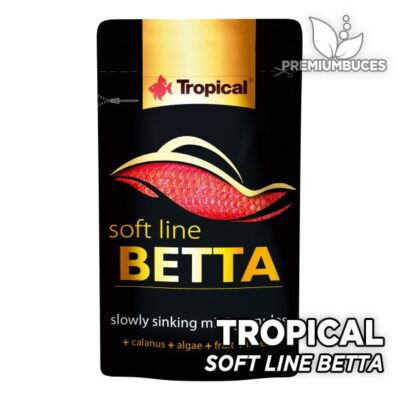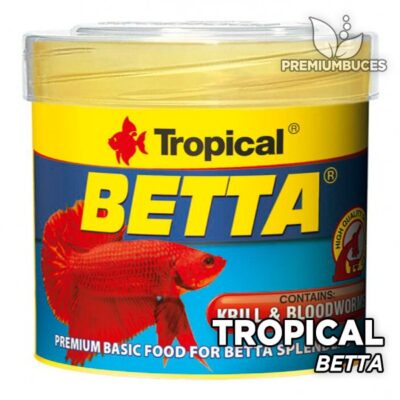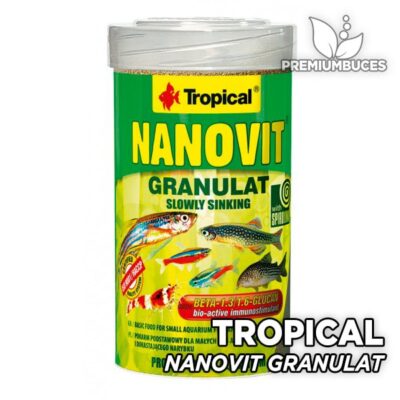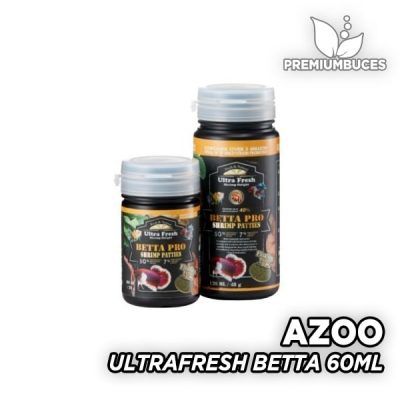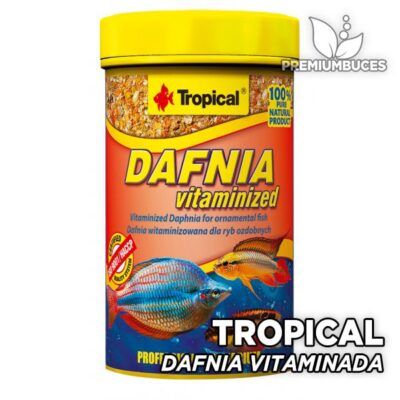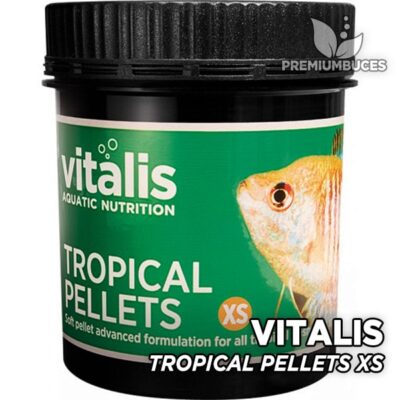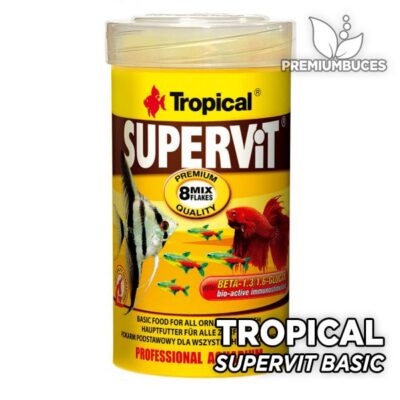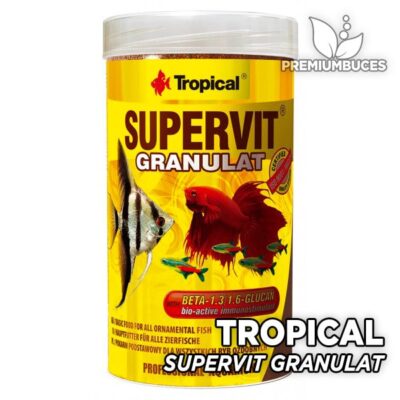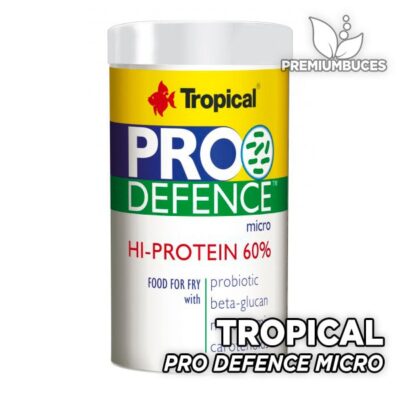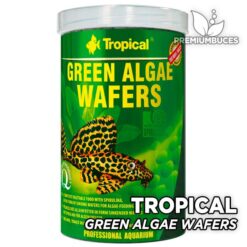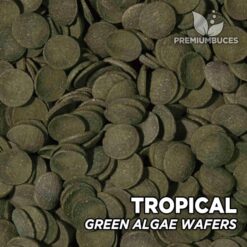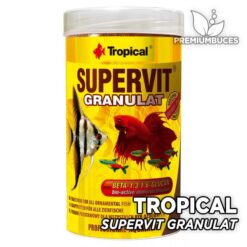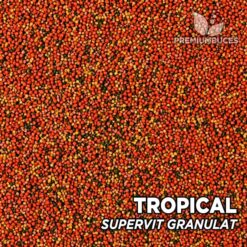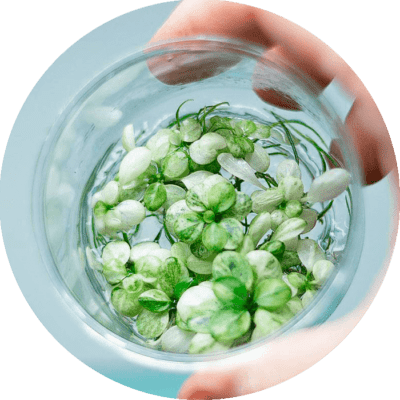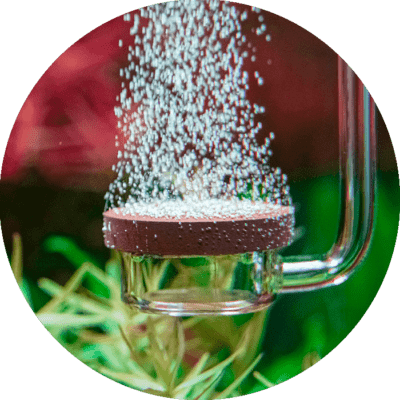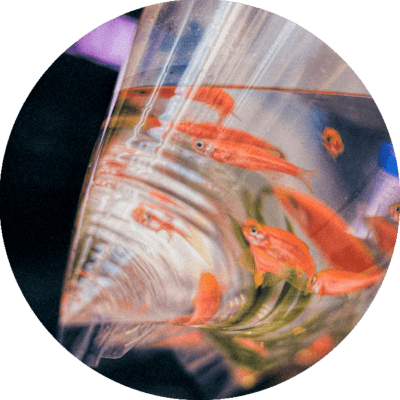Starting an aquarium with a betta splendens is very easy. They are simple fish to care for and adapt well to maintenance routines. If you want to have an aquarium with only one inhabitant, this is one of the best fish. In addition, their vibrant colors are very attractive and are the center of attention in an aquarium.
WHAT IS THE HABITAT OF BETTA SPLENDENS?
These are one of the aquarium fish most popular that currently exist. In the past, fights were organized in which these fish fought each other, while spectators organized bets.
El fighting fish or siamese fish, as betta splendens is also known, is originally from Southeast Asia. Comes from regions like Thailand, Cambodia, Malaysia and Laos where it is very common to see them. They usually live in slow and stagnant waters such as swamps or small rice fields. They are freshwater and are very comfortable in the so-called black waters. These are places where the coloration of the water turns dark due to tannins and decomposing plant matter.
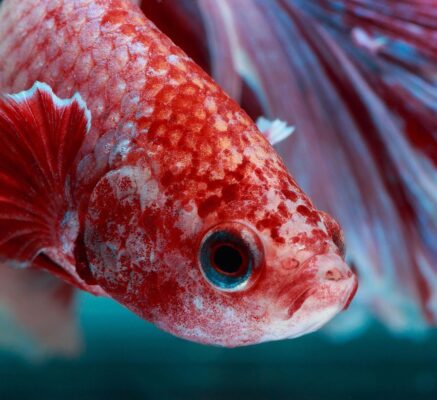
Betta comes from the vernacular dialect of Malaysia that names the fish of this species. On the other hand, splendens comes from Latin and means shiny or shiny. He betta splendens It belongs to the Osphronemidae family.
The dark colors of the betta splendens natural habitat are due to the fact that all the dark leaves that fall into the small streams of water, obscure the entire natural habitat of the betta fish. The tannins, typical of these places, also contribute to this coloration. Next we add the data sheet of this fish.
BETTA SPLENDENS SHEET
| Name | Betta, Siamese Fighting Fish |
| Medals | Perciformes |
| Family | osphronemidae |
| Scientific name | Betta splendens |
| Aquarium size (optimal) | 20 - 30 liters |
| Difficulty | Easy |
| Breeding | Media |
| Size | 6 - 7cm |
| Optimum temperature | 26 - 30 ° C |
| Optimal pH | 6.0 – 8.0 |
| Optimal GH | 4 – 14 |
| Optimal KH | 3 – 6 |
| Diet | Carnivore / Omnivore |
| Behavior | Territorial |
| Life expectancy | 2-3 years |
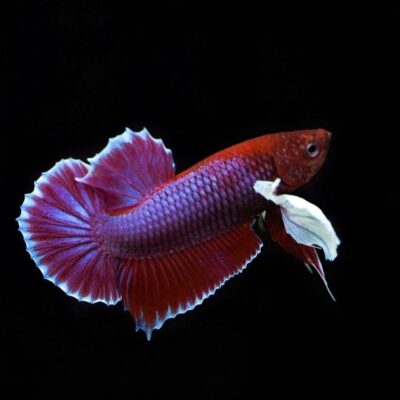
WHAT ARE THE WATER PARAMETERS OF THE BETTA FISH?
Due to the active ingredients that decompose in water, it is usually quite acidic. Even the water in these regions can register a pH lower than 5 points. The water parameters are characterized by lacking calcium and magnesium. These sources are considered soft or very soft waters.
The species of betta fish found in stores are often different from those found in the wild. Due to a constant genetic crossing in the breeding of this species, we can see that they have mutated quite a bit in their colors compared to the conditions of betta fish found in the wild.
While the fish in aquarium stores are very colorful and vibrant, those found in the wild have dark colors. This is because it is a condition of survival and maintain these colors to better adapt to their natural environment and camouflage themselves from potential predators.
The labyrinth system, in which your respiratory system develops, allows you to survive in difficult conditions. These fish could end up in small pools of water that end up drying up very soon, low in oxygen, these fish are able to breathe surface air. This is where the betta fish has a gill system that helps it survive for some time in these conditions. This gives you the opportunity to jump from puddle to puddle until you reach the water.
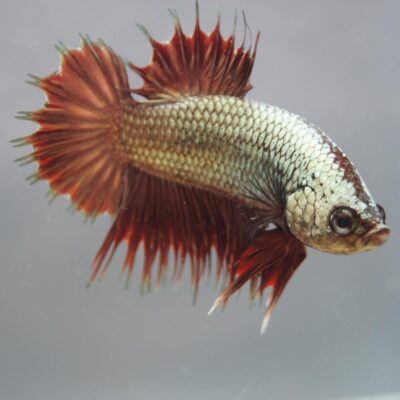
HOW MUCH DOES A BETTA FISH GROW?
In captivity, these fish can grow up to 6,5cm according to some characteristics depending on the species and care. You can find short-finned betta fish and long-finned fish.
The betta splendens are characterized by their colors. Among the most common are those with green, brown, blue, red and gray tones.
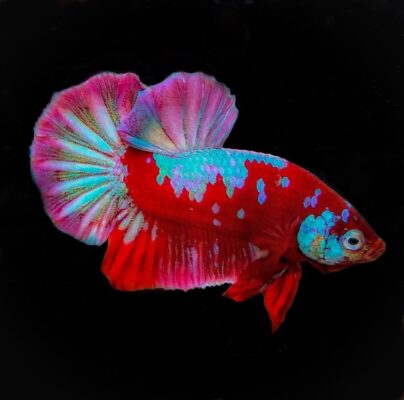
BEHAVIOR OF BETTA SPLENDENS
Betta fish are quite calm and peaceful, minus the males when they meet each other . If you put your hand in the aquarium, you will see that very soon they run towards it showing curiosity.
Keeping a betta fish at home is easy. After establishing a routine maintenanceYou will see that it is not difficult to live with these fish. However, you must give them living conditions in captivity in which they can feel comfortable. Remember that these are extremely sensitive fish and perceive much more than you think.
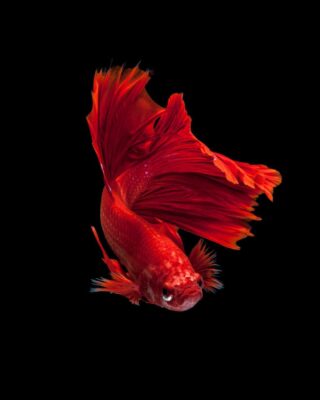
AQUARIUM FOR A BETTA SPLENDENS FISH
Many people believe that since betta fish live in places such as streams or stagnant water swamps, in a small urn they will feel comfortable. The reality is, no. A small paddy field may be bigger than we think, so a betta fish in wild conditions has plenty of space available.
Also, if the urn is not large enough, it can lead to poor water conditions for your fish. From 20 liters is the minimum measure in which these fish can live comfortably. An aquarium of this capacity is a good measure for a betta fish or a couple, but always, the more space the better.
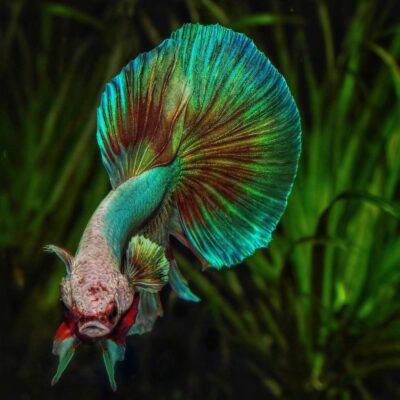
FILTRATION SYSTEM
This is an important point to have a good quality of water for your betta. Remember that if the microorganisms and organic waste that develop in the aquarium water are not filtered and treated as they should, they can cause very dangerous diseases for the inhabitants of the aquarium. A filter that has the capacity of 4-5 times the total water capacity is fine for this fish..
Remember that fish urinate and defecate in the water and this debris goes to the bottom and begins to decompose. Right here is when ammonia begins to be released that enters the water chains and burns the gills of the fish. Nitrite can accumulate in the aquarium, and although it is less toxic than ammonia, it should not be allowed to accumulate in excess, for this, the bacterial colonies of the filter will help us to a great extent to decompose into less toxic substances.
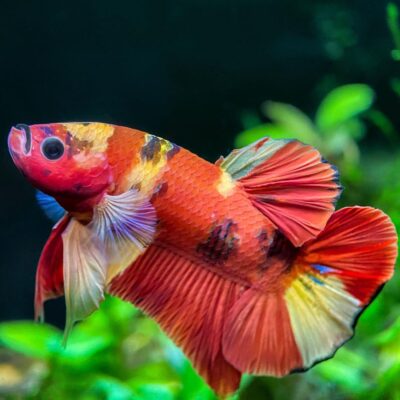
BETTA SPLENDENS AQUARIUM PLANTS
These fish are used to living in regions where the vegetation is abundant. Floating plants like duckweed, Phyllantus fluitans, Riccia or Nymphaea do very well in these aquariums. Keep in mind that plants help keep the water in your tank clean as they consume nitrogen compounds.
All the dry leaves they are also a great idea. When these begin to decompose, microorganisms begin to grow on them that can become a very important secondary food source for your fish, the biofilm. In addition, tannins that these leaves expel are beneficial for the development and health of betta fish.
Remember that this species lives in places with slow water currents, so a sponge filter will help the water flow to be calm and the betta splendens to feel comfortable and calm at home.
It is advisable not to fill your aquarium to the maximum, these fish are very good jumpers and look for a model with a lid because your little companion needs the humid air that is on the surface. Also, this helps to strengthen your muscles. Keeping your tank covered is important so that your jumping fish does not leave the aquarium.
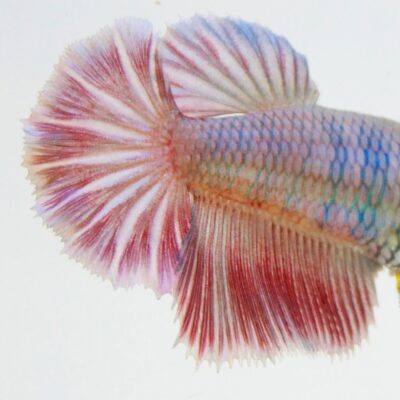
WHERE TO PLACE THE AQUARIUM OF A BETTA FISH?
You may want your fish to be the center of attention at home. It is normal, we are talking about very beautiful fish and with an anatomy that dazzles just by looking, but you can't have them anywhere in the house. Windows, kitchen, or very cold places are not a good living environment for your fish. Remember that the average temperature must remain stable so that it does not affect your pet.
If your betta fish is in a place with too much noise, it can suffer from stress. The rooms they are usually a good place for your fish. They are places where you can keep them without experiencing sudden temperature changes, a lot of noise and vibrations around you.
Drafts can be stronger than you think. Maybe you are used to the temperature changes in your city, but betta splendens fish they need quieter places, so do not bring them near the windows where they can get very cold or very hot.
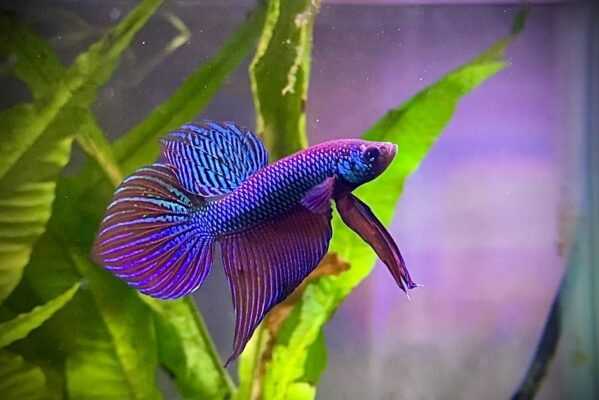
BETTA SPLENDENS AQUARIUM DECOR
Betta splendens are very active and curious fish. You will see him observe inside his fish tank inspecting every detail and corner, but keep in mind that your fish needs space. You can incorporate natural decorations such as plants and other objects such as rock and wood. These will help them feel like in their natural habitat
You should also be careful around sharp objects. Fish fins are very delicate and can feel damaged if injured by a sharp-edged object. Plants help a lot to create a calm and relaxed environment, but remember that the more accessories you introduce, the bigger the urn must be.
You can also include light in the aquarium, but betta fish don't really need excessive exposure to light. In case you want to provide a calm and relaxed environment with led lights, try that they are not too intense and powerful so that the betta splendens does not stress.
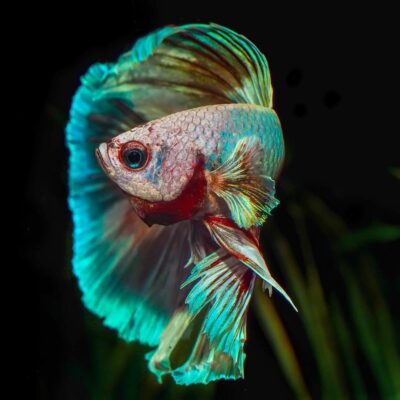
AT WHAT TEMPERATURE TO KEEP A BETTA SPLENDENS?
These fish come from regions with tropical climates, so they need the water temperature not to drop below 20 ° C. There are also other needs you have like a good filter and recurring water changes. On the other hand, you cannot leave your fish exposed to temperatures higher than 30 ° C.
Homeostasis is the system that regulates the temperature in all living things. Betta splendens are susceptible to changes and this can affect your immune system producing fatigue and tiredness and paleness. You should also bear in mind that they live in ecosystems where the temperature is constant throughout the year.
Bettas, like all fish, cannot regulate their internal temperature on their own, so they rely on outside conditions for this. A sudden change in temperature can make it difficult for them to swim, eat and even breathe. In addition, this temperature helps to maintain the nutrients in the fish food for longer.
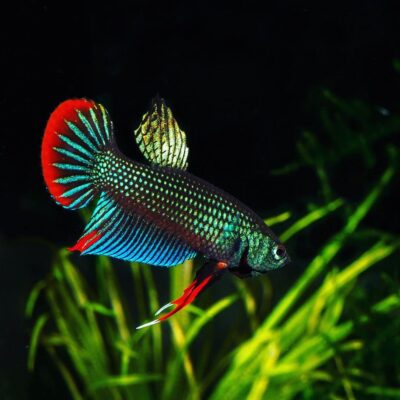
Changes in metabolism reduce the quality of life of betta splendens in very cold conditions. Because they cannot regulate their internal temperature, suffer a lot from the cold, which will result in them swimming very little or not swimming at all.
They will also seek refuge in the lower levels of the water and lose their appetite, which can lead to a very dangerous state of health. Due to its slowed metabolism in these conditions they will be more prone to bacteria and disease because their immune system is weakened.
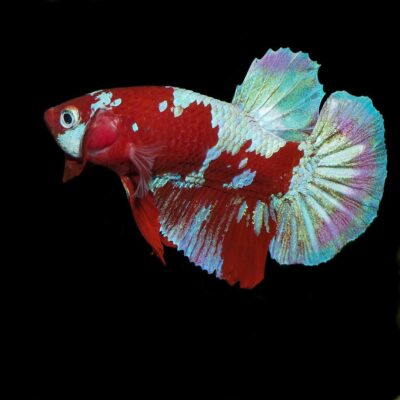
WATER TEMPERATURE OF BETTA FISH IN SUMMER
Besides affecting your metabolism, hot water contains less oxygen, so the fish cannot breathe well. Due to changes in its metabolism, your fish you will tire very quickly and it will cost you much more to swim and maintain an active life. Finally, the serious consequences of changes in metabolism are premature aging and reduction in life expectancy.
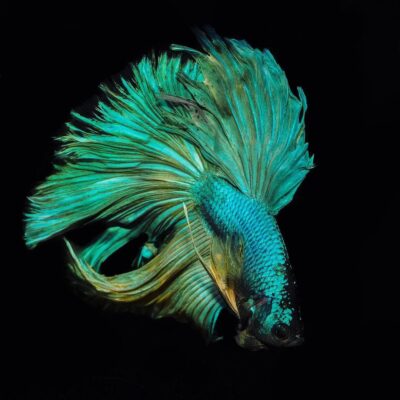
HOW TO KEEP MY BETTA'S AQUARIUM?
We already know that betta splendens fish need a smooth stream of water and a regular temperature. Now we are going to see how to maintain it, these resources will be very useful:
- Thermometer. Some heaters incorporate a thermometer, but it is better to buy a separate one to check and make sure of the water temperature.
- Heater. Try to buy a good quality and sturdy heater. Also make sure it can turn off automatically when the water is hot enough, in this case we are talking about a thermo-heater.
- Change the water in your aquarium. When you put new water in your aquarium, try not to change the temperature, and if this happens, balance with hot or cold water as necessary. If you are going to add a little more water to the urn, do it gradually so as not to generate changes in temperature too fast.
FEEDING BETTA SPLENDENS
You don't have to be an expert fish keeper to know how feed your bettaWith these instructions and a routine, your fish will be happy and healthy in the aquarium.
Live or dry food?
This is a recurring question, but the best thing about bettas is that they can combine both diets. Keep in mind that betta fish are carnivoresTherefore need protein for nourishment. Brine shrimp, larvae, and daphnias make excellent food for them. You can also incorporate insects such as mosquitoes or fruit flies. Before giving them some live or frozen foods, you can give them plant food so that they digest it better.
What do bettas fish eat in the wild?
Because he is a fighter, they have no problem finding other animals to feed on. Brine shrimp, larvae, water fleas, and others are part of their daily diet. It is important that you recreate these nutrients in the domestic life of this fish so that it has a balanced diet.
Think that your fish needs protein that other fish or insects will get as a base. Remember that you can't feed a betta fish exclusively plant-based foods like those that other fish in tropical waters may need. So do not make the betta a vegetarian because they can get sick and even die.
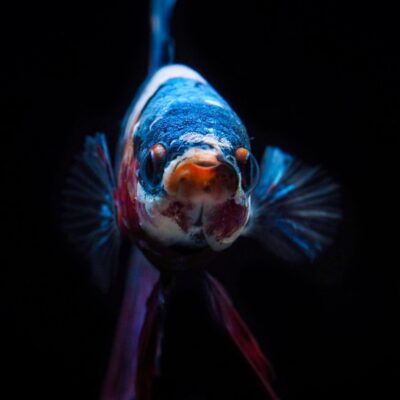
How many times should I feed my betta?
Between once or twice a day it is enough for the fish to be happy and healthy. If you do it twice a day, one should be at night and another in the morning. Try to be very punctual with your meal times to create nutrition habits and that food is always in very small quantities.
If you have a betta splendens fingerling fish, this needs food adapted to its size several times a day so that it can develop.
Don't be afraid to starve a fish, they can survive up to 15 days without eating. You can implement a scheduled fasting plan. This will help you cleanse your digestive tract and be stronger and more energetic. not feeding him one or two alternate days a week will be enough.
How much food should I feed my fish?
Feeding your pet the right amount is very important. Failure to do so can lead to health problems for your fish.
If you are giving him pellets, 2 or 3 medium bars is more than enough once or twice a day. If it is freeze-dried, live or frozen food, 2 servings at each meal will serve to nourish the betta well.
When it comes to granulated or smaller foods, you can do a test to see how much you should give. Place 3 flakes in the aquarium, if you see that he eats them all, you can add one more, until you see that he has eaten all. Some fish eat slower, but if your betta doesn't eat all you've given him after 5 minutes, then you've over-fed him. After you have this measurement, you will know how much to give at each meal.
Don't give him too much food, it may stay at the bottom of the aquarium and begin to decompose. This affects the quality of the water your fish swims in because toxic substances are released that can be harmful.
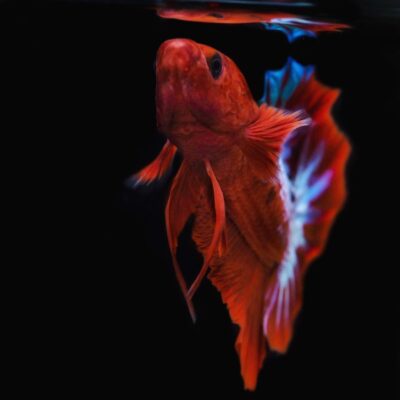
What are the best foods for a betta fish?
Keep a varied diet for the inhabitants of your aquarium is the best option. There are many meat-based products that replicate the wild diet of these fish very well.
- Blood worms. Bettas have a very well defined character, and if you have one of those who is elusive to many of their meals, with bloodworms they will enjoy quite a feast. They are very nutritious and being alive will help your fish to exercise its hunting skills. Although your fish may love this food, do not make it the main one in its diet because it lacks some essential nutrients and amino acids for its nutrition.
- Daphnia. If you want to contribute to the proper functioning of your betta's digestive system, this is the ideal food. They help with constipation and digestive upset.
- Mosquito larvae and fruit flies. These foods are very present in the diet of bettas because they are a great source of protein and can be found very easily.
- Small fish. As we have seen, Siamese fish enjoy meat a lot, so other smaller fish such as fingerlings can be part of their diet.
- Flake food. This was a perfect addition to your fish's meals. They are not ideal to feed as a main meal, but they complement any meal. They lack some of the nutrients that live foods have, but if you need a quick fix, this is a good option.
- Fish pellets. These are the improved version of the flakes. They have a greater amount of nutrients and in a balanced way. They are quite fresh and are very good for a healthy and balanced diet, we can find them in small granulated form.
- Dry and frozen foods. The larvae and other insects recreate the wild diet of bettas very well. If you have to choose between dry and frozen, keep in mind that dry lose more nutrients. Certain essential amino acids and nutrients are compromised in the dehydration process, so keep this in mind when feeding your fish.
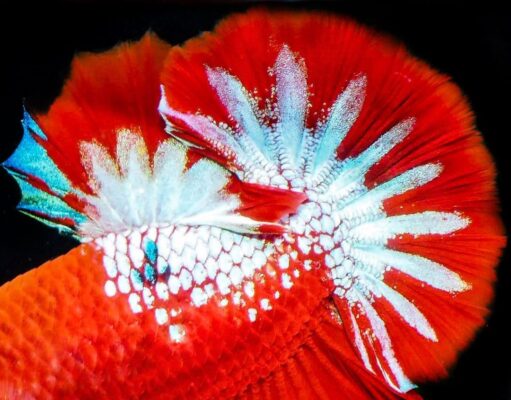
The dangers of overcharging.
Keep in mind that the stomach of the fish is really small and it is very likely that their appetite is larger than their stomach, this is so instinctively. Fish can last several days without being fed, so don't be tempted. You may see them swimming on the surface to receive food, but you must adopt stable eating routines. Here are some risks and consequences of overeating:
- Fatty liver. This happens when fish overeat and their liver becomes unable to work normally. This disease can cause death in some species.
- Fin rot. Your fish's fins can take on a different appearance, similar to a hairline, which is usually caused by overfeeding.
- Constipation. When fish eat more than their body can digest, they suffer from constipation and stress.
When there is too much food residue in the tank, the pH can become even more alkaline, putting your betta fish under a lot of stress.
What to do when you go on vacation?
If you leave home for a short period like 2 or 3 days, there will be no problem if you don't feed them. They will be fine. Be sure to feed them in a good way a few days before going out and it will be enough.
If you're going to be away for longer, it's a good idea to have someone else keep them in the meantime. Just be sure to leave clear instructions on caring for your betta. Do a water change before you leave and write down the maintenance routine so the caregiver knows exactly what to do during your absence.
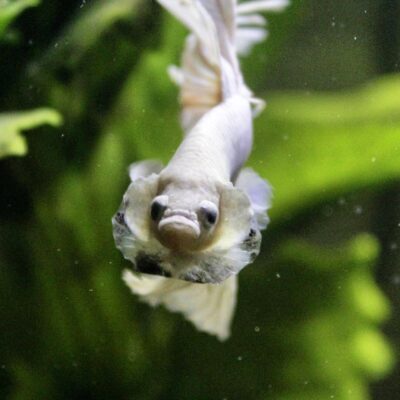
BREEDING AND REPRODUCTION OF BETTA SPLENDENS
There aren't too many differences between feeding and caring for a male betta to a female betta, but you should know that the female version of the fighting fish is not friendlier than her male companion. Are quite territorial and can be aggressive towards aquarium companions. However, this behavior is not as intense against males of its species.
The females only attack when they see their space threatened or before an attack. You should also bear in mind that if the feeding and water conditions are not adequate, they can suffer from stress and aggression.
Differences between a female and a male betta splendens.
You may not recognize the differences between bettas, but there are several characteristics that you can take into account.
- Size. Males are slightly larger and can grow to 6.5 to 7 cm, while females only reach 5 to 5,5 cm. You should also consider breeding conditions and genetics, but these are the standard measures of growth.
- Colours. Bettas splendens are very famous for their colors, but one way to differentiate them is that the colors of the males are brighter and those of the females less intense.
- Egg stain. This is a mark that is between the tail and the fins. This is the hole through which the female expels the eggs in mating.
- Species. Breeders often refer to females as betta females, but males have more varieties. In addition, the skin of the females darkens in mating.
- finsThe anal, dorsal and caudal fins are shorter in females than in males. While some males can also have flat fins.
- Group of female betta splendens. This is one of the most interesting characteristics of the females. It is a tank in which 4 to 6 female bettas coexist. If you want to raise several bettas together, remember that you must have an aquarium large enough so that they do not injure each other and maintain their space.A good way to keep these females without conflict is to buy an aquarium with divisions so that each one has its own space. Finding their own and specific space is very important for them, so keep it in mind. In these cases you should always have a very powerful filter because bacteria, toxic agents and germs multiply in an aquarium where more fish live. But remember that they need a slow, gentle stream of water.
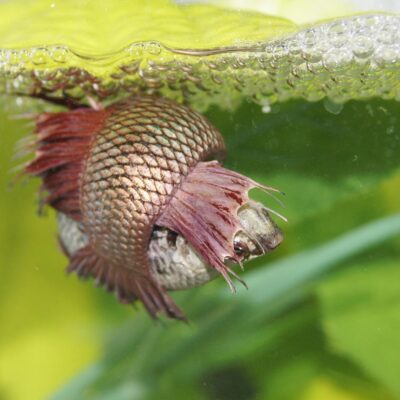
Bettas mating.
If you want to have betta fry, you're going to need the parents. First of all, you must allocate a specific aquarium for the male to make the bubble nests. After this you can put them together, if the female is impressed enough, the courtship will begin.
This moment can be a bit aggressive and the male can hurt the female, if this happens they need to be separated. When everything goes well and they have mated, it is necessary to separate them because the male can try to attack the female. On the other hand, the female can eat the eggs.
When the eggs are in the nest, you have to clean the aquarium very carefully so that the fish are born healthy. It is also necessary to put a lid on the aquarium so that pests or insects in the environment do not attack them.
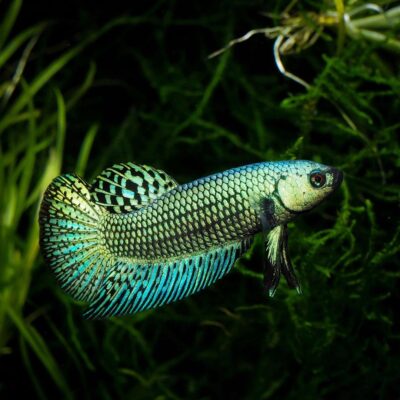
Reproduction of betta fish.
The females of this species need enough space for the eggs. Floating plants and other objects where the male can make the nest are very important. The aquarium should have a cover that keeps the air warm and humid so that the fry can develop their labyrinth organ.
The male builds the nest in the leaves or among the vegetation on the surface, but does not tolerate the female loitering until her work is completed. The female pales and white stripes usually appear on her flanks. Under the nest spawning occurs in a typical osphronemidae hug with the male being hugged by the female.
At the point of climax, the milk and the eggs that the female collects in her pelvic fins are released so that the male then transfers them to the nest. At this point the female collects the loose eggs and this is repeated until the female is exhausted.
If there are no aggressions, both can stay in place, although the male takes care of the nest. Then within 24 to 48 hours the eggs hatch, but they will remain about 3 or 4 more days until all the yolk sac is absorbed.
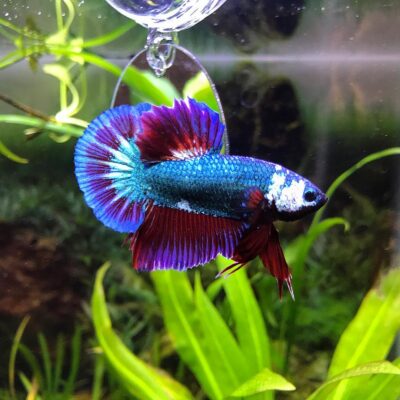
The male can continue to care for the eggs and will move them to another location if necessary. When the fry swim by themselves, the male is no longer interested in them, but the adults do not usually eat their young.
To the little ones they are fed with infusoria and after a few days they can be fed micro worms and brine shrimp. However, you must be careful because too much brine shrimp can affect your health. Water changes should be small and regular so as not to affect the fry.
Variety of female betta fish.
Although the males have larger varieties, the females have some very interesting characteristics. Let's see some.
Betta Koi Fish Female.
These are one of the most attractive because their colors and shapes are similar to those of males. Its colors range from red, yellow, gold and silver. This is an ideal strain if you want to have a group of bettas at home because they are more peaceful and tolerant.
Female veil tail betta fish.
For mating, this is a variety that offers real challenges because it is one of the most aggressive. However, their mating is very interesting because they are bettas with very intense and bright colors.
They should be separated from males very early to avoid injury and courtship should only be attempted with a limited number of mating bettas. Although she is aggressive, she tends to get along with her peers if she is in a group.
WHICH FISHES ARE COMPATIBLE WITH THE BETTA SPLENDENS?
Remember that females are a bit more tolerant than males. The corydoras, ghost shrimp, guppies and kuhli loaches, make sure that they are not very long fish and that their skin does not have such intense colors because they stress them and make them alert.
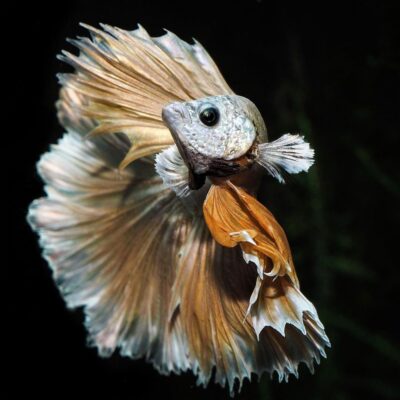
If after trying the integration gradually and giving them a wide space for everyone in the aquarium, you cannot get them to get along, you should separate them. Remember that bettas can be aggressive towards the other inhabitants of the aquarium.
You may want to add some companions to your betta, but you have to keep some recommendations in mind. These they are not friendly fish and sharing can be very difficult for them. Nor can we speak of more aggressive varieties than others: when you bring a betta splendens home you never know.
You should not keep two male bettas in the same aquarium. They are going to hurt themselves and may even be mortally wounded. Females are more tolerant of their mates, but you always have to be alert before possible fights.
Clown, zebra, and bristle fish can be good companions. Peaceful people like tetras, Chinese neons and rasboras can live with a betta without major fights. However, you should know that the betta does not need company and if you incorporate other fish to the aquarium it is not to meet their needs.
Avoid betta-like or fast-swimming species that can injure their fins like barbels. Those with bright colorful skin will not get along with your fish. Avoid Guppies, Gouramis of very intense colors and other labyrinths, these are a complete no.
Creating a community aquarium with bettas splendens is not an easy task. You must make sure they are compatible and be aware of possible attacks. You should also be prepared to separate the betta from the others because they can be very unpredictable.
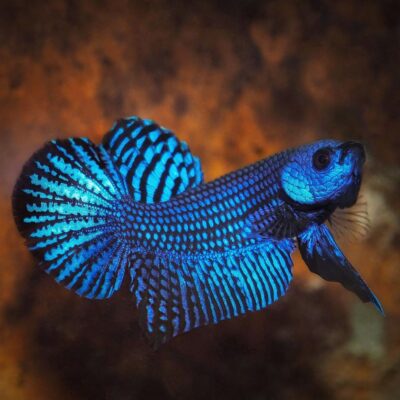
POSSIBLE BETTA FISH DISEASES
There are several diseases that your betta splendens can suffer, we are going to describe some so that you can recognize their symptoms.
- Swim bladder. This is the organ that allows fish to float in one place without having to swim. Without it, your fish would be constantly swimming to stay, if you see that your betta has trouble staying floating and has a hard time staying on the surface, it may be suffering from this disease. If you have a crooked swim or a swollen belly, these are also warning signs.
- Fin rot. This is an infection that can have a fungal or bacterial origin. When it comes to a fungus, white spots will appear all over its fins, but if it is an infection, its fins will look as if they are crumbling into threads. If it is the infection, you will see that the tips of the fins darken and may look red and irritated.
- Dropsy. Drops is not a disease as such, we are talking about a set of symptoms that reveal the poor health of your betta. Be very careful because it is almost always fatal. If you keep your fish healthy and well cared for, the possibility of dropsy is very low. Pineapple scales are the most important symptoms. Your fish becomes so inflamed that its scales stick out like a pineapple. Your stomach can swell and cause your back to curve. You tend to look very tired due to inflammation.
- Velvet or velvet. This time we are talking about a parasite that can be lethal if it is not treated. The most important sign is a layer of a kind of golden powder on your skin. It's not about the parasite, but about the way the fish tries to eliminate it. If you see your fish rub its body against objects in the aquarium, it may be that it is trying to get rid of the symptoms. If this parasite advances it can cause other diseases such as cloudy eye.
- Ich or white point. Ich or white spot disease is characterized by sections of your fish's body that turn whitish. It is a very contagious parasite that causes a lot of itching and discomfort. If it is not medicated, it can affect your betta's respiratory system and end up dying.
- Popeye. This is a disease in which the eyes become too swollen and appear to be going out of the eye socket. You can be suspicious of popeye if you see that your fish's eyes have changed color and appear cloudy and bloodstained. When the cornea becomes inflamed and ruptures it begins to leak blood. You can also see a white ring around the fish's eyes when the disease is starting.
- Cloudy eye. With this disease your fish will begin to have problems swimming and looking for food because it cannot have good vision. You can also observe that there is a layer of mucus on his body as a sign of the disease.
- columnaris. Columnaris is an infection caused by poor aquarium conditions for bettas. Worn fins and a cotton ball on its body can reveal that this infection is attacking your fish. You can also know what columnaris is when ulcers and sores appear on the fish's body and its gills turn brown.
- Tuberculosis. This is a disease that in fish is different from what humans suffer from, so do not be afraid of contagion. The great problem with tuberculosis is that when the noticeable symptoms appear, the disease is quite advanced. It usually occurs in fish with a weakened immune system. If you see your fish lose weight, its body looks crooked, its skin changes, it may be tuberculosis.
- Hole-in-the-head disease. This is a very serious condition, but if the first symptoms are recognized, treatment can be very favorable. A first symptom may be a change in the stool, which becomes whitish and fibrous. You may also notice that your skin changes color. If hole-in-the-head disease is not treated in time and spreads throughout the body, it could be the end of your betta splendens life.
- Branchial flukes. Parasites called trematodes lodge in the gills and skin of fish. You can recognize this parasite because the body will suddenly become covered in a kind of mucus to fight the infection. Your betta may also rub his skin against everything to relieve his itchiness, leading to sores and wounds. Finally, and as a very serious symptom of the disease, you can see how your betta gasps for a little air on the surface. This is an alarming sign that the disease is affecting your gills.
- Anchor worms. This is another parasite that can be found in your fish, although it is very rare for your betta to suffer from this disease. Despite what most people think, they are not worms, they are crustaceans that live in fish and go deep into their skin. One that reaches a certain depth, uses its head to anchor itself in the fish. This disease allows the keeper to see the parasites because they are large enough to be observed by the human eye. They are also distinguished by their green, red and white colors. In a similar way to other parasites, anchor worms cause a very annoying itch in fish. This causes them to look for anything in the aquarium that can alleviate this feeling. If you notice some sores on the fish's skin, it may be the result of constant rubbing. Respiratory problems can also be seen because the worms burrow into your fish's organs, causing breathing difficulties.
- Tumors. Like most animals that develop some type of tumor, their caretaker does not have much chance to act. Providing a comfortable and friendly environment is the best effort you can do for your fish, if your betta splendens has developed a tumor, you don't have to feel bad because it's not your fault. Unfortunately, these tumors in fish can develop regardless of the care they receive. A good way to eliminate hazards is to feed well and not let carcinogens get into the aquarium - there are not too many ways to tell that your fish has a tumor. If the tumor is lodged in a deep cavity in your body, there is no way to tell. When the bumps appear and stick out on the outside it is a good way to recognize them. However, keep in mind that not all lumps are tumors, it can be an abscess or an ulcer.
- Hemorrhages. Bleeds are not very common in bettas, but you can do something about them. It is also called a red mouth, and you can see blood stains in your mouth and in your eyes. This type of bleeding is very contagious, so if your fish is accompanied, you should separate it immediately. Certain red discolorations or stripes on your fish's body can betray this disease. You can also observe open sores on the body of your fish, and as the disease progresses, internal organs are affected, so you may see it gasp on the surface because it has difficulty breathing.
- Mouth rot. As you can imagine, this time it is your fish's mouth that is in trouble. It can be one of the first illnesses of a betta. The primary symptoms are few and slow, but they progress. The good thing is that your fish can respond very well to treatment. One sign that the infection is beginning, but not yet serious, is that there are some white spots around the mouth of the betta splendens. When the disease is progressing, these white spots take on a porous texture similar to a sponge or cotton, similar to columnaris. Some ulcers grow around the mouth as a result of the infection. When infections are in a very serious stage, the fish's mouth and lips will begin to show signs of decomposition, as if they were falling apart. Rot makes it difficult for fish to feed, so they can go without food for a long time because of this infection.
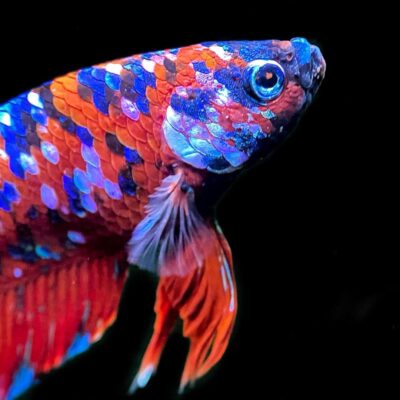
HOW TO CLEAN THE AQUARIUM OF A BETTA SPLENDENS?
A betta's aquarium must be properly maintained. Even if you have a good filter, the water stores toxins that accumulate and is necessary bring clean fresh water through regular water changes. In the following points we will explain how to change the water in a small aquarium, removing the fish from the urn so that it does not stress, if the aquarium is bigger we don't have to remove the animal.
- First of all, wash your hands very well. We do not want you to transmit germs or bacteria to the aquarium. If you use soap, be sure to rinse everything very well before putting your hands in the water.
- Disconnect all the electrical system of the aquarium and if you think it is necessary, cover the floor and nearby furniture so that they do not get wet.
- Prepare everything you are going to use to clean. So you don't have to continually come and go for something you forgot. Also bring a bowl so you can keep your fish while you clean his urn. It doesn't have to be too big, just add some water from the aquarium and keep it there while you clean the crystals and siphon the bottom.
- Your fish may be surprised if it finds all the water changed. You can start by changing 30% of the total water and gradually increase up to 50%. Don't worry, this amount of water will not affect your fish at all and they will feel more comfortable with some of the water they already know.
- It's time to get the betta out. When you already have the water separated for the fish, try to remove it from the aquarium with a saltwater to place it in the bowl. When you take it out of the tank, use a lid or your hand to make sure the betta doesn't jump.
- When you have already separated the water that will remain in the tank, pour the rest into the sink using a filter or collector so that the remains do not go down the drain. Now is the time to clean the aquarium windows to remove possible lime residue and algae residues, this can be done with a scraper or cloth. Do not use soap in any accessory or in the aquarium because the remains can harm the fish, the entire cleaning process must be done with the same aquarium water, you must also siphon the bottom to remove organic waste that may have accumulated.
- Now is the time to refill the aquarium. Introduce the new water little by little so as not to lift the gravel from the substrate, use an antichlor in the new water as a conditioner. After placing the bowl with the fish in the tank at an angle, soon the betta will swim into the water.
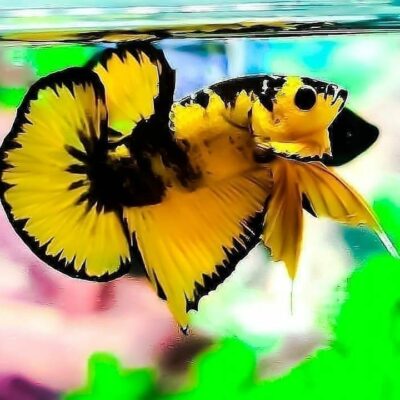
VARIETIES AND SPECIES OF BETTA SPLENDENS
The variety of bettas is actually very wide and they are registered more than 70 different varieties within the species. You may not find that much variety in aquarium stores, but if you look deeply, you will surely find a betta that you like and want to bring home.
Veiltail betta fish.
This is the most common variety. If you've visited a pet store or fish store, chances are you've seen them. Its tail is thin and its light movement makes it look like a silk veil carried by the wind. In stores you can find them under the name of Siamese fighting fish. This is because it is the most popular variety and because it was the first betta to be kept in captivity. One of its most pleasant characteristics is that, within its species, it is one of the most peaceful.
Halfmoon or half moon tail betta fish.
This is one of the most attractive. Its baby is usually in cauteverio and its name comes from the 180 ° turn that its tail makes, looking like a half moon. Along with veiltail, it is becoming a common variety for hobbyists. However, its character is not so gentle and it can be difficult for it to live with other fish. It was first introduced in 1980 and we recommend that you keep it in a specific aquarium. They are not as common in stores, but you can find betta farms.
Rosetail betta fish.
If you have seen this fish, you surely remember it clearly because it is difficult to forget the shape of its tail. Breeding them is a bit tricky because it is the result of genetic crosses. They have a common past with the crescent-tailed betta. However, the tip of the tail of this has a wavy shape that gives it that particular movement. Due to the genetic mutation it has suffered, it requires special care, so if you plan to bring one of these home, remember that it is a little more delicate than the rest.
Plakat betta fish.
This is the variety that is most closely related to bettas found in nature. They are like the ancestors of those in captivity and those found in aquarium stores. These need bigger tanks because they are more active and nothing much more than the rest, so they need room to move from one place to another. Because their genetics are more closely related to wild bettas, they are hardier and don't tend to get sick or injured on a regular basis.
Elephant ear betta fish.
These are also closely related to bettas in the rice paddies and swamps. The fins found on its pectorals look like those of an elephant, hence its name. They are very exotic and flashy. Their fur closely resembles species in nature, being less shiny than captive-bred bettas. This is one of the most aggressive varieties, so it is necessary that you have an aquarium just for him. You will not have to worry about illness or injury because they are quite resistant. Although you always have to give them a healthy environment in which to swim.
Crowntail or crown tail betta fish.
This is one of the smallest to see sunlight. Its calf was only obtained until 1997 and its cobweb-shaped fins are reminiscent of the tips of a crown. It is a really very beautiful species because its colors are varied and very exotic. This variety is available in the market, but due to its rarity and peculiarity, it is not so easy to find. If you are looking for one of these, you have to be prepared to have much more demanding water conditions than the rest. It is important to keep them in good condition away from disease or infection because they have a more delicate immune system.
In conclusion, betta fish are very easy to care for. With water conditioners, a heater, thermometer, and weekly water changes, it will be more than enough to keep your fish protected from disease or infection.
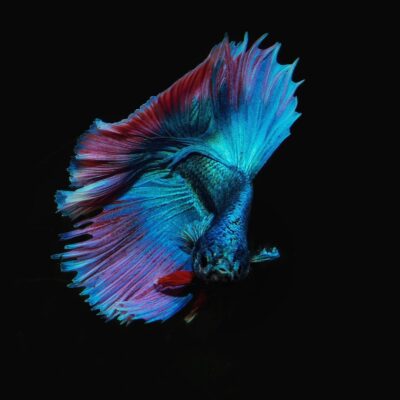
Their feeding should include protein that you can get in aquarium stores and you can vary this diet with some plant foods. These are generally very active fish and they react very well to all types of food. If you follow all these tips, it will be much easier for you to enjoy the colors, shapes and behavior of this peculiar fish.
Other articles of interest may be:
How to Eliminate Aquarium Algae - Causes and Most Effective Treatments
Caridines and Neocaridines - File and Care Aquarium Prawns
Rate this article:
In our online store you can buy items for the maintenance of Betta Splendens and receive them in 24 hours in Spain.

